Ecumenism Flowers in The Desert

During this January I was able to get the break I needed after the 76 year presence of the Jesuits in Halifax was brought to a close. I chose for the first time in my life to escape our northern climes and for a real change to find some sun and warmth. This meant Arizona, in the desert near Tucson. I chose the Desert House of Prayer, a ministry of the Redemptorists in the U.S. I got the rest I needed, learned a great deal about centering prayer – the topic of another blog – and left with new hope in this wintertime of ecumenism.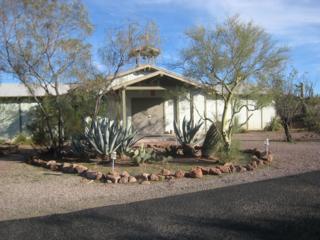
I made many other discoveries during my presence here. First of all, while some of the time the temperature hovered around 20°, there were also cold and rainy spells which I did not expect. The site of the house of prayer is on the border of a large national park which features the Saguaro cactus, which lives well over 100 years and grows to over 100 feet, and at the age of 50 or so develops branches. But there are many other cacti as well, big ones, small ones, skinny ones, fat ones, but all of them with spines that one wants to avoid. This is especially true of the jumping cholla cactus, which in the hope of spreading its seed sheds small segments of itself designed to stick, once carried aloft by a puff of wind, to whatever passes by. I found out that removing its barbed spines is painful and very difficult.
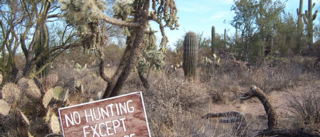 The main desert trails are known as washes, long stretches of loose rocks and coarse sand, totally covered with water during the summer monsoons, water which does not flow anywhere but is gradually absorbed into the ground. There is abundant animal life which one can meet: coyotes, deer, bobcats, rabbits, and peccaries, who live in families, and are distantly related to boars and pigs.
The main desert trails are known as washes, long stretches of loose rocks and coarse sand, totally covered with water during the summer monsoons, water which does not flow anywhere but is gradually absorbed into the ground. There is abundant animal life which one can meet: coyotes, deer, bobcats, rabbits, and peccaries, who live in families, and are distantly related to boars and pigs.
Fortunately these animals are just as little interested in close encounters as the humans who frequent the desert. But, we are told, do bring a stick and know how to make yourself look big. There are also petroglyphs, markings in the stone made by an earlier civilization – maybe 1000 years old – which are easy to view.
One of my discoveries during my time here was the make-up of the clientele – usually around 15 people, with very few empty rooms or hermitages. There are many more women than men, mostly women who have already raised their families, and sometimes older religious, like the women who, thank God, become staff associates in our various retreat houses. But I soon noticed that most of these women were from denominations other than Catholic.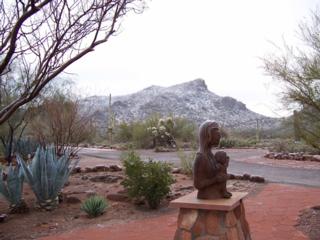
Many of them are searchers, born in one denomination, having gravitated to another, and often worshipping in a third, and they seem very much at home in the atmosphere of this house of prayer. Belonging to a religious institution may have played a role in their lives, but spiritual practice is at the centre. For most of them contemplative spirituality is entwined with a serious and often creative commitment to the work of justice and compassion. Many have worked in distant countries, empowered by appropriate academic and personal training.
For the house of prayer to adapt to this reality meant heavy doses of what grates my theologically sensitive ears, for example God as mother/father, various versions of the doxology which “smack” (to use the old term) of this or that heresy, a variant version of the breviary – morning and evening prayer are a regular part of the schedule – in which, for example, “kindom” is not a typo for “kingdom” but a way of de-fanging a term which bespeaks patriarchy. By the end of my time here I got used to this approach and could see appropriateness to it, along the lines of the pastoral focus which is uppermost in the mind of our current Pope.
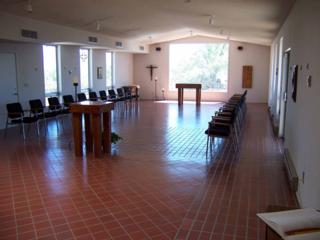 There were periods most days in which we could get to know one another conversationally, and what I discovered is that most of the people who come here have been coming here regularly for years, and generally have a very serious practice of contemplative prayer, entwined with a keen social commitment. These are people good to be with. Contemplation brings people of different Christian denominations together in this place and enables them to share worship together in the Roman Catholic tradition.
There were periods most days in which we could get to know one another conversationally, and what I discovered is that most of the people who come here have been coming here regularly for years, and generally have a very serious practice of contemplative prayer, entwined with a keen social commitment. These are people good to be with. Contemplation brings people of different Christian denominations together in this place and enables them to share worship together in the Roman Catholic tradition.
In my earlier years I was heavily involved in the ecumenism of doctrine, which advances at a snail’s pace with many detours and blind alleys. In the 70's and 80's we foolishly thought that significant corporate reunions were around the corner, but this turned out to be premature. What we know now is that this ecumenism of doctrine and institutions must be accompanied by ecumenism of shared commitment in works of justice and compassion – of this Pope Francis reminds us time and time again – and ecumenism of spiritual experience.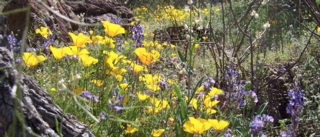
I discovered here that there exists a whole network of teachers of spirituality who come from different Christian backgrounds but who work collaboratively, speak a mutually intelligible language, and build a broad community. They are witnesses and pioneers to all of us. Perhaps with the growth in ecumenism of action and of spiritual experience there will be a new impetus for ecumenism of doctrine and of institutions. Indeed to begin with the latter is to adopt a top down approach rather than the bottom up approach which alone will help us, in cooperation with the Spirit, to bring about the unity Christ wants for us.
+++++++++++++++++
Source for all photos: Desert House of Prayer.




No Comments